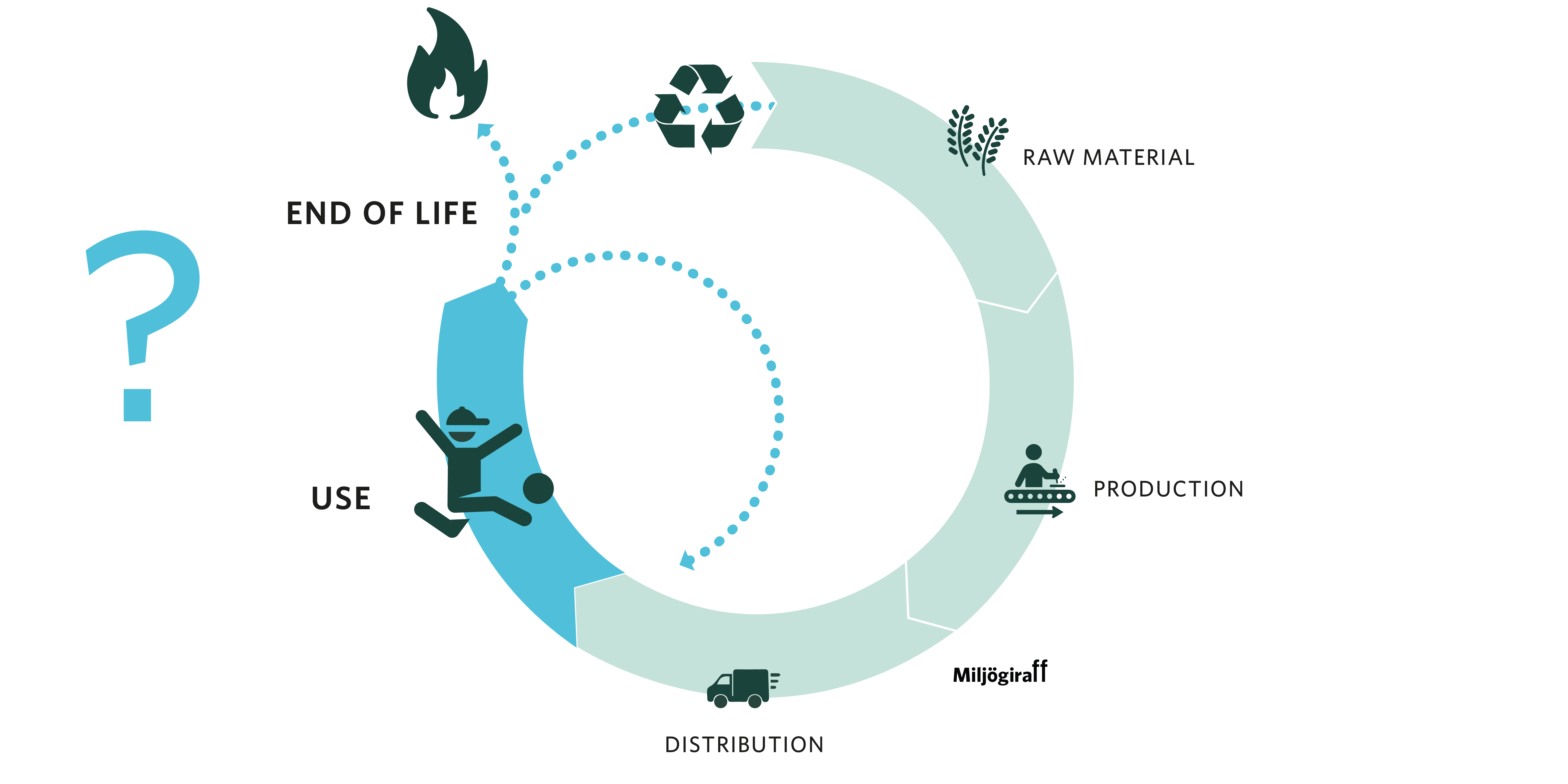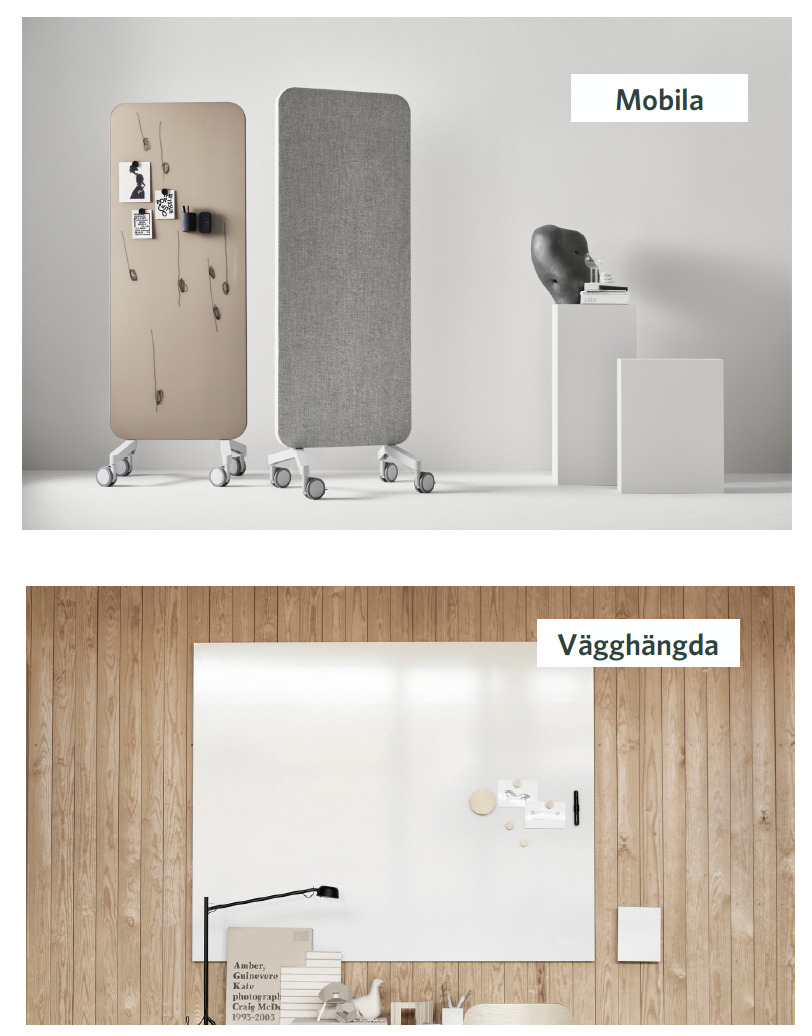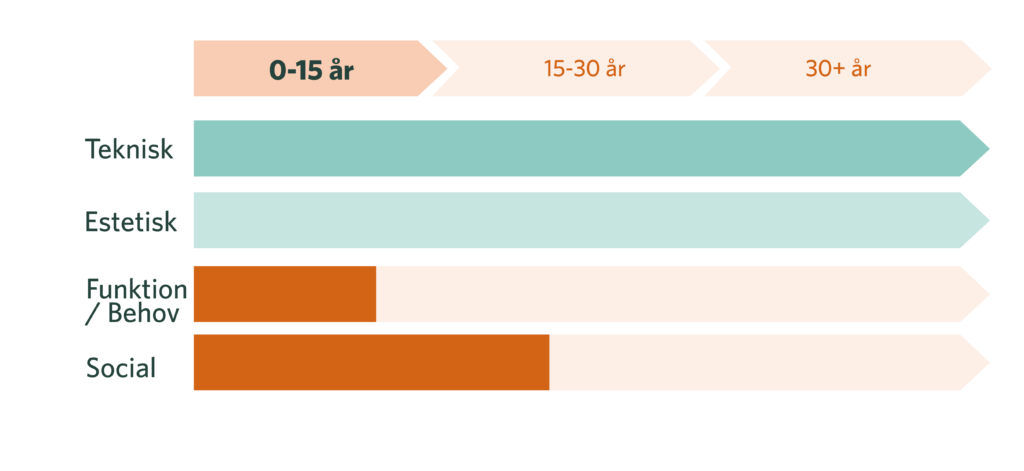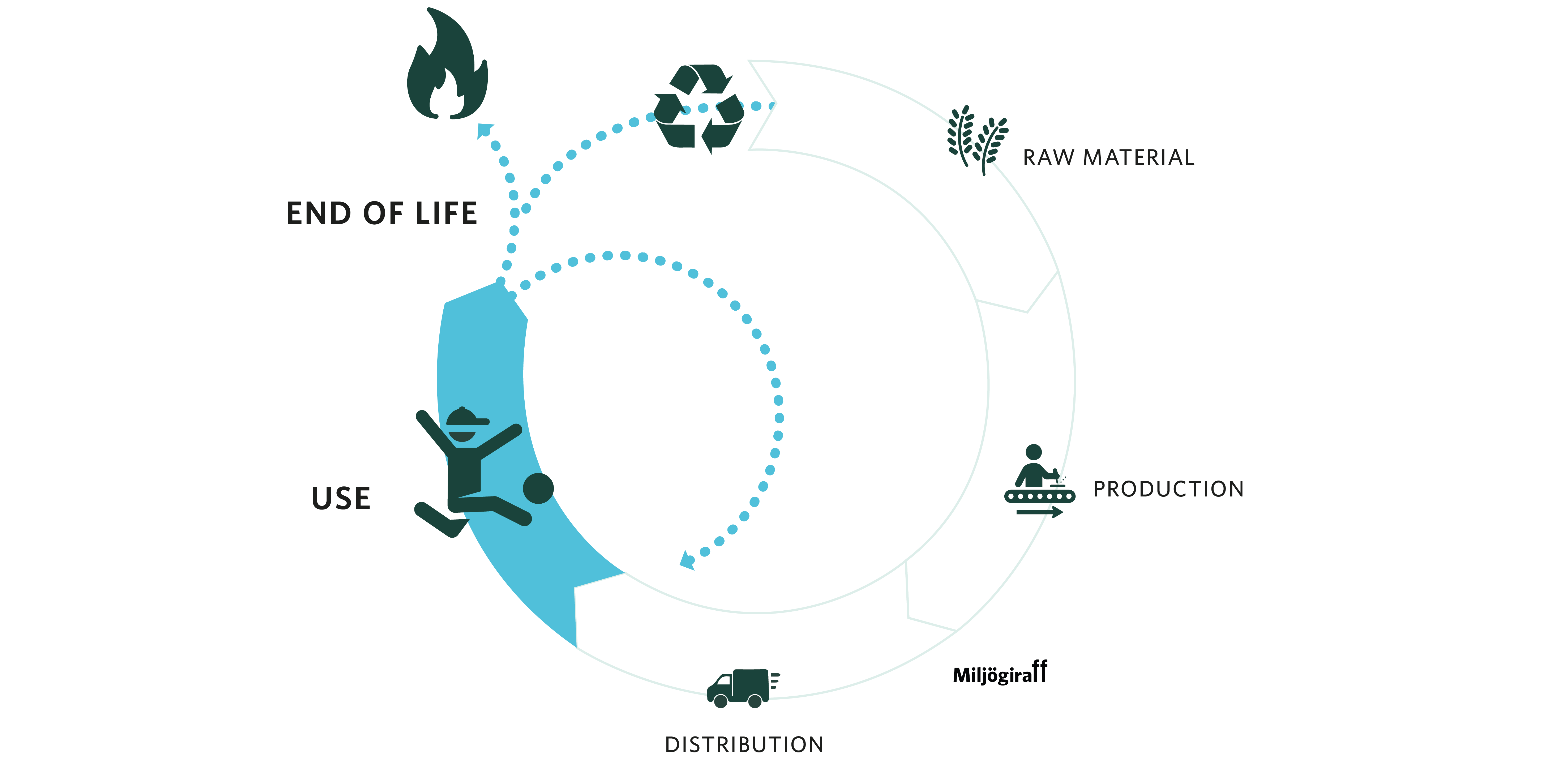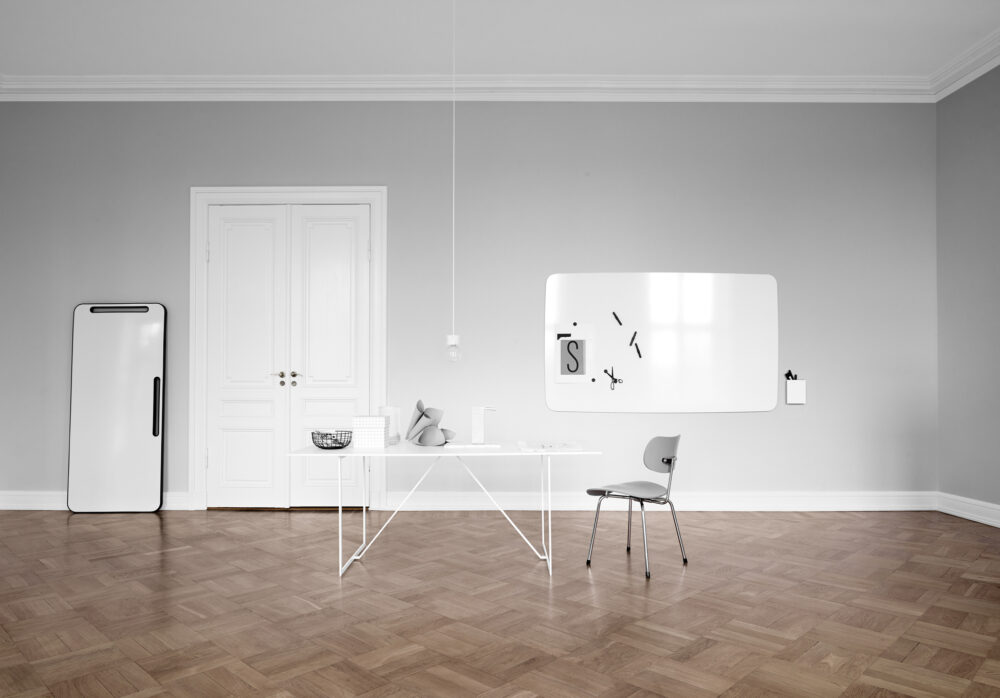
Product’s life time – How long are the products used?
How long are Lintex products actually used? What happens during the usage phase and at the end-of-life?
These are questions that Sara Gripstrand, the sustainability manager at Lintex, wondered about when she came to us at Miljögiraff with a new assignment. The task was to conduct a lifespan study on Lintex products. Lintex and Miljögiraff have long collaborated to evaluate the environmental impact of Lintex products. This collaboration has resulted in several Environmental Product Declarations (EPD) and Life Cycle Analyses (LCA). In these analyses, we distribute the environmental impact over a usage period of 15 years, as this is the reference period to be used when creating EPDs for Lintex’s type of furniture. But what is the actual lifespan?
The goal of the lifespan study was to provide Lintex with more knowledge about what actually happens to the products after sale and how long they are used by customers. The study would also investigate potential reasons why customers dispose of the products and how they go about doing so. Additionally, it was of interest to examine which factors could contribute to the products being used longer than the reference period.

“Gaining knowledge about what happens to the products a company manufactures during usage and at the end-of-life stage should be an integral part of a company’s sustainability efforts. […]
Sara Gripstrand,
It is not acceptable to release products and not care about how long they are used or how the material will be circulated in the end. Finding solutions to keep products and materials within the circular economy requires collaboration between many parties with different business setups, making it complex and challenging.”
Hållbarhetsansvarig,
Lintex
4 perspectives that effect the life time of products – Future Adaptive Design (FAD)
In qualitative interview sessions with individuals from Lintex, reuse companies, an end customer, and a reseller, we investigated how long Lintex products are in use and what factors influence their lifespan. As a starting point, we used the Future Adaptive Design (FAD) methodology. This method is based on four perspectives that impact the lifespan of products.
Technical obsolescence
The product loses its value through wear and tear or breaks down.
Aesthetical obsolescence
The visual value of the product decreases, for example, through changes in shape or color.
Functional obsolescence
The customer’s needs change, and the product no longer meets the new needs.
Social obsolescence
The product decreases in value due to societal changes, such as digitalization and new business models.
Future Adaptive Design (FAD) is a design and business development methodology developed by RISE. In September 2023, they published the results of extensive research and shared a toolkit with companies so that, with the support of FAD, they can extend the lifespan of products. Read more about FAD on the RISE website
Potential technical lifespan of 30+ years, but actual lifespan of 5-15 years due to changing needs and aesthetic requirements from customers.
The study shows that Lintex products have a high technical lifespan of 30+ years, but customers’ needs and aesthetic preferences tend to change after 5-15 years. This is the critical point in the products’ lifespan. Often, this is due to companies moving offices and reevaluating the need for existing products and the company’s aesthetic concept. Some products are easier to move to a new office than others, leading to differences in the actual lifespan of different product groups. Some products are considered too difficult or heavy to move, prompting customers to buy new ones rather than invest time and money in moving the existing products. If the products are left behind in the office, there is a high risk that they will be discarded by the new tenants or by those implementing the new tenants’ interior design concept.
In the study, we can see that Lintex products are most at risk of being affected by aesthetic, functional, and social aging. Below is a summary and excerpts from the study on how they are impacted from the different perspectives.
Aesthetic ageing
If customers buy a neutral color, respondents believed that the actual lifespan of the products could be extended, while a strong and trendy color does not have as long an aesthetic lifespan, as customers tire more quickly of the appearance.
Functional ageing
The most common reason customers dispose of the products was functional aging, meaning the customers no longer need the products. Sometimes this was due to new physical conditions in the space, such as the products not fitting in a new location. Other times it was due to updates in functional and interior design concepts.
Social ageing
Increasing digitalization affects the lifespan and need for the products. For example, products need to be able to work alongside a digital screen. Currently, Lintex products face some challenges in meeting new business models such as reuse and refurbishment. This can hinder the products from circulating in the usage phase and thus achieving a longer lifespan.
Curiosity and focus on the product’s lifecycle create opportunities for business and product development.
The results from the study provided Lintex with a deeper understanding of what happens during the usage phase and at the end stage of the products’ lifecycle. By broadening the perspective and not only focusing on extending the technical lifespan of the products, but also on understanding how customers’ needs change over time, a business strategy can be created that effectively extends the product’s lifespan and meets changing market needs.
The project is a first step for Lintex to gather more information about the lifecycles of their products and to future-proof their design and business strategy. A step that is in the right direction, according to us at Miljögiraff!
Miljögiraff thoughts
Who is responsible for the lifespan of products? The producer or the consumer?
At Miljögiraff, we believe it is important for all stakeholders to recognize and focus on their part in the lifecycle and what they actually have control over. It is not solely the producer or the consumer who should take responsibility for the environmental impact of products. In fact, a new type of collaboration is needed, where each actor optimizes the use of the product and helps others do the same. The producer must provide the conditions for a long lifespan and cater to changing needs in the market, for example through the possibility of refurbishment and customization. Consumers need to ensure that purchases are well-considered and that the products are actually used. When it comes to interior design, architects and interior designers play a key role and bear significant responsibility in extending and optimizing the lifespan of furniture
Life cycle assessment – We need to put more light on the use phase
As life cycle analysts, we have a responsibility to place greater focus on the usage phase to support our producing customers in understanding what actually happens in various usage scenarios. We must ensure that the usage phase and end-of-life phase become as important in the analyses as raw materials, production, and distribution. This might seem quite obvious, but we are not there yet. The hope is that this will develop in tandem with the transition to a circular economy.
The project with Lintex has given us new momentum to focus more on the usage phase, and we are eager to learn more!How long are your products used, and what happens at the end of their lifecycle? Do you want to discuss the usage phase in your lifecycle? Or do you need help with a lifespan study? Contact us
